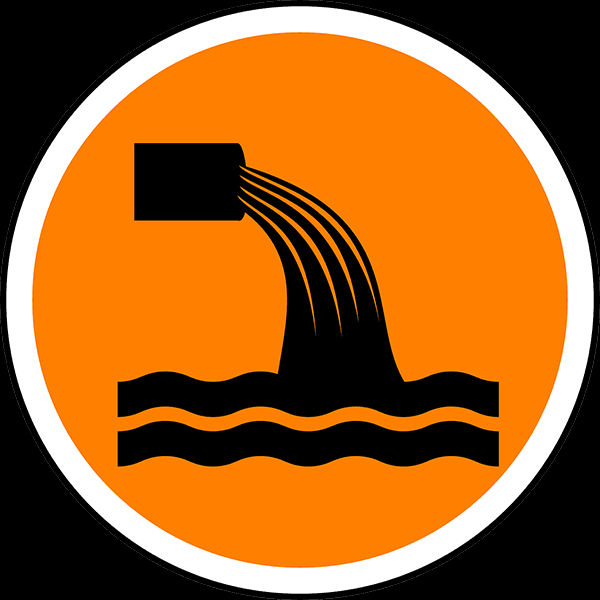The Greatest Guide To Reclaim Waste
The Greatest Guide To Reclaim Waste
Blog Article
The smart Trick of Reclaim Waste That Nobody is Talking About
Table of ContentsOur Reclaim Waste DiariesFascination About Reclaim WasteThe Buzz on Reclaim WasteUnknown Facts About Reclaim WasteWhat Does Reclaim Waste Mean?
Check out the types, events, and kinds of liquid waste. Residential sewer waste refers to the waste and items from a property sewage-disposal tank. This kind of waste is produced by human beings in residences, institutions, and various other structures. This only includes septic tanks that have a drainpipe field. The correct administration and disposal of residential sewer waste call for fluid waste to be transferred to a sewage treatment plant where the proper methods and equipment are put on cleanse and get rid of waste.
Business waste typically consists of possible dangers, such as flammable materials or a mix of fluid and strong waste products, and needs a more sophisticated and comprehensive disposal procedure. The disposal of industrial waste commonly involves the filtration of waste before transportation to make certain safe and correct disposal. Hazardous waste is created from results and overflow of industrial processes and manufacturing.
This kind of waste can not utilize the exact same sewer monitoring transportation or processes as septic or industrial fluids. The hazardous waste monitoring process calls for the inspection and testing of fluid waste prior to it undertakes the disposal process (liquid waste disposal melbourne). Runoff waste is the liquid waste that originates from drainage and excess stormwater in very populated areas or cities
Overflow waste can cause contamination and flooding if not handled properly. Ensuring correct waste administration can prevent catastrophes and decrease ecological damage.
Some Ideas on Reclaim Waste You Need To Know
Call PROS Services today to discover our waste administration and disposal solutions and the proper ways to care for the liquid waste you generate.
(https://reclaimwaste1.edublogs.org/2024/11/12/efficient-liquid-waste-removal-and-disposal-your-complete-guide-to-sustainable-waste-management/)This supposed 'wastewater' is not only an essential resource yet, after therapy, will be launched to our land, waterways or the sea. Made use of water from toilets, showers, bathrooms, kitchen area sinks, laundries and industrial procedures is known as wastewater.

water utilized to cool down machinery or clean plant and equipment). Stormwater, a kind of wastewater, is runoff that streams from agricultural and city locations such as roofing systems, parks, gardens, roadways, courses and rain gutters right into stormwater drains pipes, after rainfall. Stormwater streams neglected directly to local creeks or rivers, at some point reaching the sea.
The Best Guide To Reclaim Waste
In Queensland, a lot of wastewater is treated at sewage therapy plants. Wastewater is moved from residential or industrial websites via a system of sewers and pump stations, recognized as sewage reticulation, to a sewage treatment plant. Local governments build, maintain and operate most sewer treatment plants. Operators are licensed under the index Environmental Defense Act 1994 to release treated wastewater at an appropriate ecological criterion into rivers.
The Division of Natural Resources advises regional governments about managing, operating and keeping sewerage systems and therapy plants. In unsewered areas, city governments might require owners to install specific or house sewage treatment systems to deal with residential wastewater from commodes, cooking areas, bathrooms and washings. The Department of Natural Resources authorizes the usage of household systems when they are proven to be effective.
The majority of stormwater receives no therapy. In some new neighborhoods, therapy of some stormwater to get rid of trash, sand and crushed rock has actually begun using gross pollutant traps. Wastewater treatment takes place in 4 stages: Removes solid issue. Larger solids, such as plastics and various other things wrongly discharged to sewage systems, are gotten rid of when wastewater is gone through displays.
Utilizes tiny living organisms recognizes as micro-organisms to damage down and remove continuing to be liquified wastes and fine fragments. Micro-organisms and wastes are included in the sludge.
Indicators on Reclaim Waste You Need To Know
Nutrient removal is not readily available at all sewer therapy plants since it requires expensive specialised tools. Clear fluid effluent generated after treatment may still have disease-causing micro-organisms - industrial wastewater treatment.

A lot of wastewater streams into the sewerage system. Under the Act, local federal governments administer authorizations and permits for environmentally pertinent activities (Ages) including wastewater launches that might have a neighborhood impact.
What Does Reclaim Waste Do?
Tracking gives accurate details regarding water high quality and can validate that permit problems are being fulfilled. The details obtained through surveillance provides the basis for making water high quality decisions.
Report this page